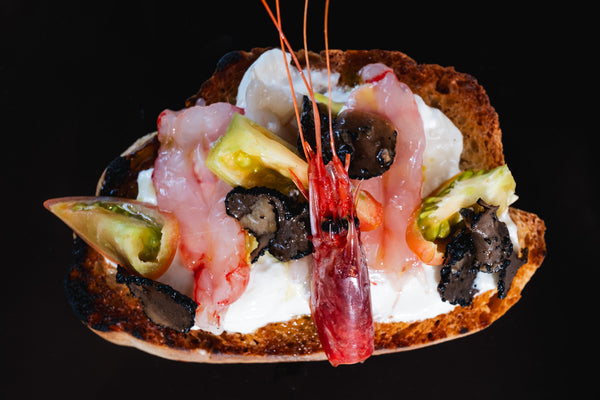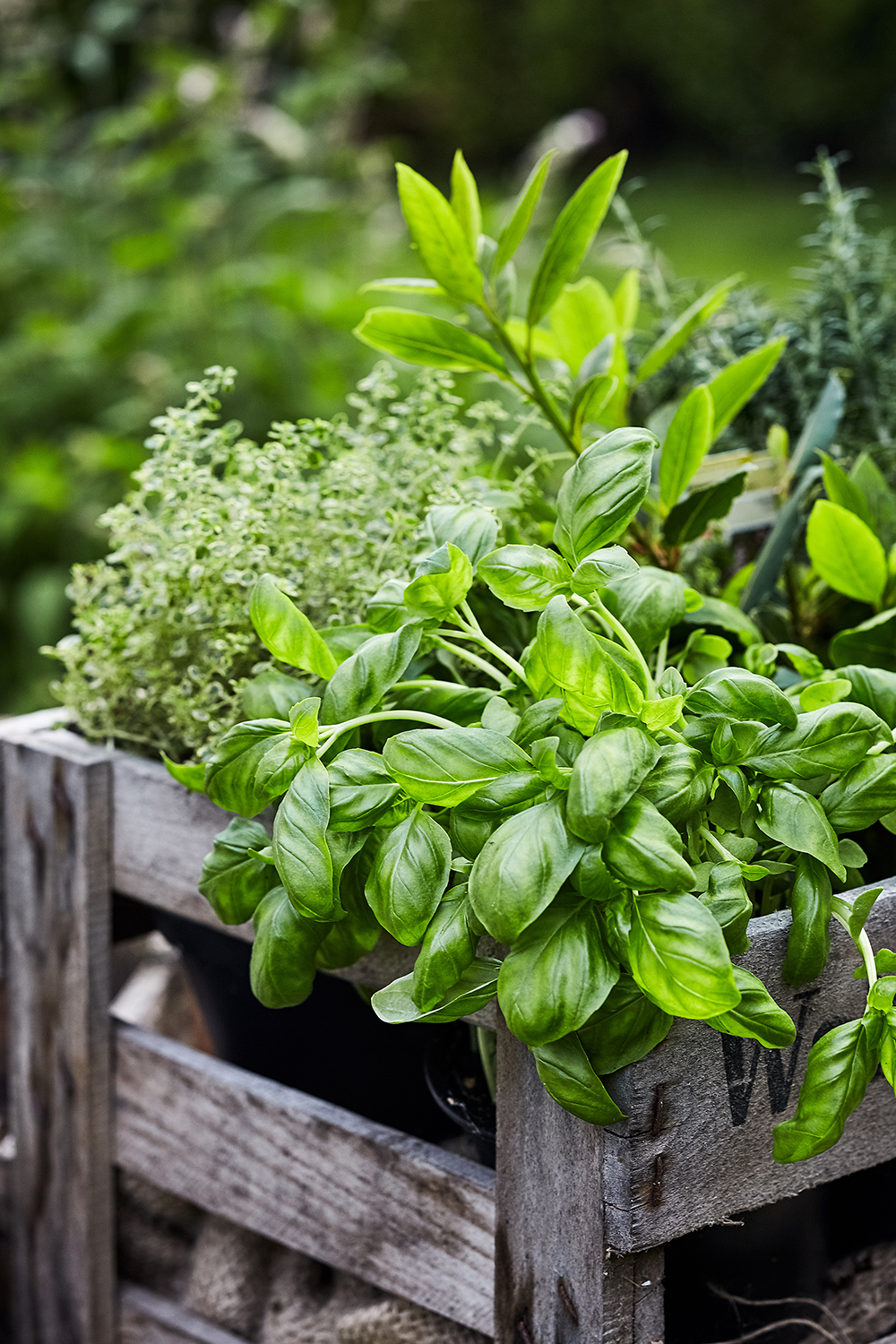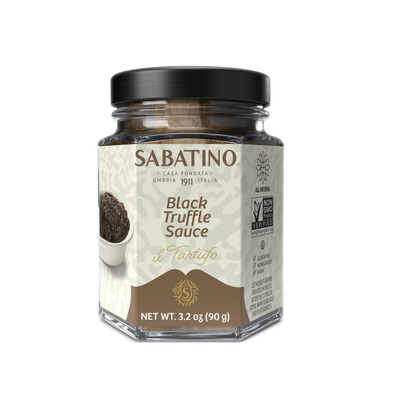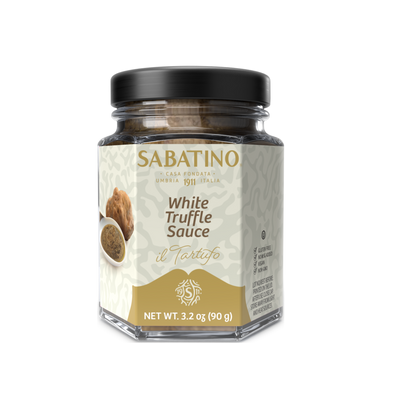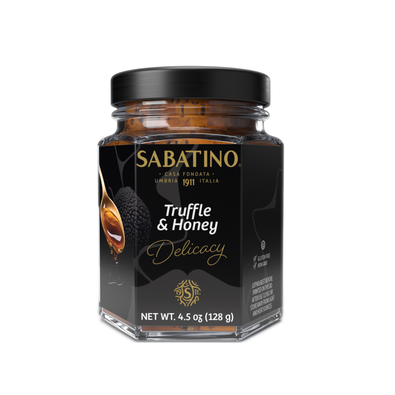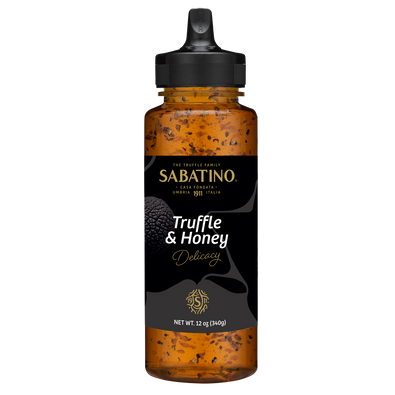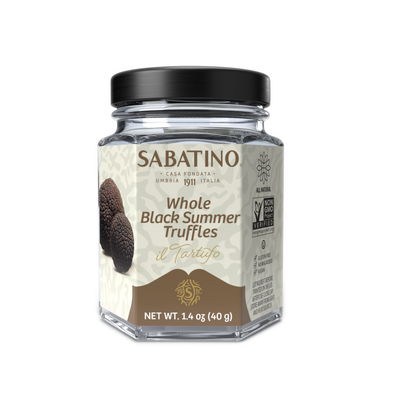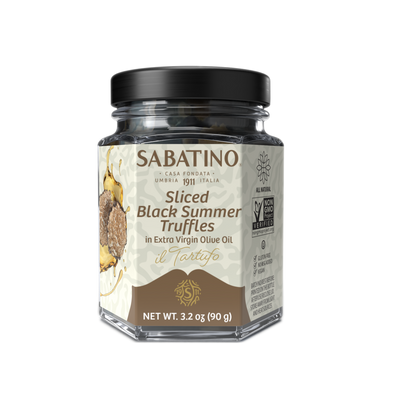
Fresh herbs are just one of the many culinary highlights of the summertime. At Sabatino Tartufi, we love gardening and growing fresh herbs and vegetables that naturally complement our truffles and truffle products in the dishes we create. In this article we explore just a few herbs that work exceptionally well with truffles and offer a few examples of dishes that benefit from pairing truffles and fresh herbs.
The most popular herbs to pair with truffles are rosemary, parsley, thyme, basil, and oregano. We will guide you through using these fresh summertime herbs in your cooking to highlight your dish and most importantly, complement your use of truffles and truffle products in your cooking.

It is a common misconception that truffles are vegetables. They are actually not vegetables but rather fungi. Similar to their fungal cousins, mushrooms, truffles can often be found in dense and lush forests after some rainfall. Where they differ is that they grow underground along the roots of trees in a symbiotic relationship with their host tree. By providing vital nutrients to the tree from the soil surrounding in exchange for compounds needed for growth, truffles are able to exist and reproduce through the spread of their spores throughout the forest. The flavor of truffles depends on where they are grown and which type they are. Sabatino Tartufi focuses on black winter truffles (tuber melanosporum), black summer truffles (tuber aestivum), and white truffles (tuber magnatum), the most sought after truffles for their rarity and flavor intensity.
Herbs on the other hand are cultivated for their ability to lend fresh, floral, and vegetal flavors to food to further enhance their flavor and palatability. In this guide, you’ll learn more about rosemary, thyme, basil, oregano, and parsley. We’ll discuss their origins and how they are most often utilized in cuisine, in general, as well as with truffles.

Rosemary is a plant that is native to the Mediterranean and other countries surrounding the region. Rosemary has a strong, distinctive taste similar to licorice and anise that adds an interesting dimension of flavor to many savory dishes.

Thyme is a very versatile herb, with many different uses in the kitchen. It has an aromatic, subtly sweet flavor and pairs well with many types of dishes. It is so aromatic that its name actually stems from the word “thymus” which means “to perfume”. The herb has been used for centuries as an essential oil for perfuming and incense in particular for its aromas.
Thyme is used as a seasoning for various sauces, soups and stews. It can be found very often on pizzas as well as on meats such as lamb or beef to give it a bit of a woodsy aroma. Because truffles are also wonderful additions to pizza, lamb or beef, the flavor of thyme can often be used to further enhance the flavor of those dishes. A great example of this is the way we use thyme to accentuate the smokiness of our Truffle & Smoked Sea Salt in our Crispy Smashed Potatoes with Truffle & Smoked Sea Salt.

Parsley is a very popular herb with lots of uses. It is commonly used to garnish dishes and salads, but it can also be used to create flavor profiles such as in the case of cooking with truffles and parsley.
Parsley is a delicate herb that has an earthy and floral aroma and flavor. Traditionally, it is most often served as a garnish for dishes or salads, however it has shown how bright and flavorful it can be when incorporated into vibrant sauces like chimichurri.
When cooked, parsley gives off a notably floral aroma and creates a bright counterpoint to the earthy, almost nutty aromas of truffles. The combination of truffles and parsley are exquisite when used in starchy dishes like pasta or potatoes. Mashed potatoes studded with truffles and parsley can be a transformative dish. Equally as stunning is a grilled hangar steak topped with chimichurri sauce and drizzled with truffle oil.
Parsley can even be used as a focal point in cocktails like our Truffle Parsley Paloma.


Chives are a type of herb in the onion family. They belong to the Allium family and are native to Eurasia. Their light, fresh onion-y taste can be used as both an herb and vegetable in recipes. One of the benefits of chives is they are available year-round, which is handy during the winter months when most truffle varieties are in season.
Chives are often paired with eggs and potatoes to make them more flavorful. Eggs and potatoes also happen to be wonderful foils for truffles, so combining truffles and chives with either eggs or potatoes is a natural fit. French omelettes with chives can be finished with freshly sliced or grated truffles in the center, or topped with a dash of truffle salt or drizzle of truffle oil.
It is also a popular ingredient in sauces or in creamy soups. Used to top a bowl of New England Clam Chowder that is finished with a dash of Truffle Zest® or White Truffle infused Olive Oil will bring out both the onion notes as well as the earthier notes of truffles transforming a predominantly seafood-oriented soup into more of a surf and turf affair.

Basil is a common warm weather herb that has a distinctive flavor. It grows as a tall plant and has green, pointy leaves and smells varying from spicy to sweet. Its leaves are often used in dishes for flavoring.
Basil has been used for thousands of years in different cultures for its healing properties and culinary uses. The Greeks and Romans used basil in their cooking, as well as in their religious ceremonies. It was believed that the herb would bring good fortune to those who consumed it. Basil comes from the word “basileus” which means king or royal. When it was discovered by the Romans they began using it for their kings to consume, beginning its association with royalty.
It has wide-ranging culinary uses and can be used with many different ingredients, but is most notably showcased in the Italian pesto, where it is combined with pignoli nuts, Parmigiano Reggiano, garlic, salt, and olive oil. To make a more unique pesto, you can add white truffle infused olive oil in place of a standard olive oil to instantly add a truffle element to your pesto and use in the same fashion as you would pesto, to top pastas or seafood and as a spread for bread or crostini.

Oregano is used to add zest and flavor in many dishes. It is widely used in Mediterranean cuisine, especially Greek, Italian, Turkish and Spanish cuisines. Over the centuries, oregano has gone by many names including wild marjoram, mountain oregano or winter savory.
Oregano has been grown worldwide for its warm and woodsy flavor which can be used in both sweet and savory dishes, especially meat dishes where enzymes also help to tenderize the protein.
The flavor of oregano is usually dependent on where it was grown and how the plant was processed. This means that there are many different varieties of this herb which each have their own unique flavor profile. You'll often find two kinds of oregano in Italian dishes, like spaghetti or lasagna - dried oregano and fresh oregano. Dried herbs are often less potent than fresh herbs because they lose some of the brighter flavor molecules in the drying process making them earthier. Fresh oregano conversely brings a fresh and fragrant flavor and aroma to dishes that is bolder. In this instance, dried oregano often is a better pairing with truffles and truffle products because of its earthier flavor that mimics and mirrors the earthy notes of truffles.
One classic way to use oregano and truffles together is cooking white beans (cannellini or great northern beans are great choices) in a flavorful broth along with dried oregano and serving with a fresh sprinkling of dried oregano and a drizzle of truffle oil to finish. When served with a crusty baguette or toast, this is a creative starter or hors d’oeuvres.
 Sage is a staple in the kitchen because it has so many uses. It's great for flavoring meat, poultry, and seafood dishes. Sage can also be used to season vegetables and sauces. There are many ways to cook with sage, but one of the most popular ways of using it as a flavor component in sauces like brown butter. Sage leaves can be used fresh or dried, but the flavor will differ depending on which type you use in your cooking. Fresh sage will offer floral and vegetal notes to a dish, while dried sage brings a more woodsy and warmer flavor to dishes.
Sage is a staple in the kitchen because it has so many uses. It's great for flavoring meat, poultry, and seafood dishes. Sage can also be used to season vegetables and sauces. There are many ways to cook with sage, but one of the most popular ways of using it as a flavor component in sauces like brown butter. Sage leaves can be used fresh or dried, but the flavor will differ depending on which type you use in your cooking. Fresh sage will offer floral and vegetal notes to a dish, while dried sage brings a more woodsy and warmer flavor to dishes.
The earthy flavor of sage pairs well with rich meats and sauces. Sage is not quite as strong as thyme or rosemary, so it's a great herb to use if you want to avoid overwhelming a dish with a single herb. In addition to adding flavor, the leaves are also often used in cooking because they have preservative qualities that prevent food from spoiling too quickly.
When pairing sage with truffles, it is often a good idea to cook the sage or blend it into the sauce of the dish to soften some of its flavors and create a heartier, more warming base upon which the flavor of fresh truffles or truffle products can stand out. The sage brown butter used in our Pan-Seared Gnocchi with White Truffle Browned Butter, Sage and White Truffles is a great example of how to incorporate sage and truffles together to make an exquisite meal.
